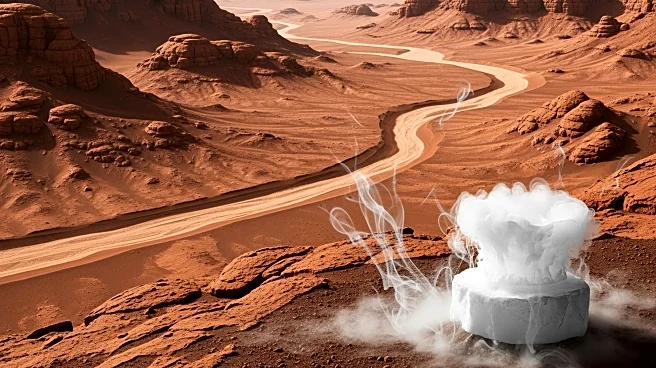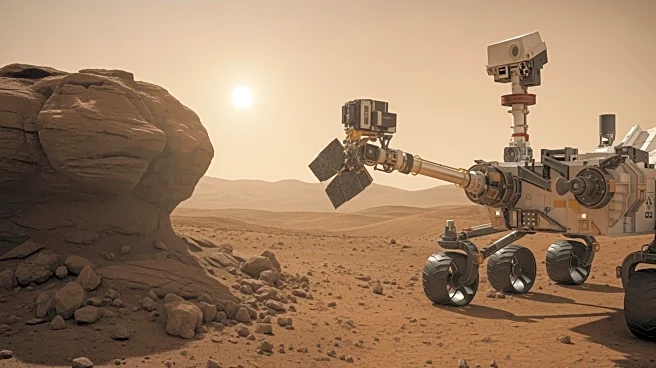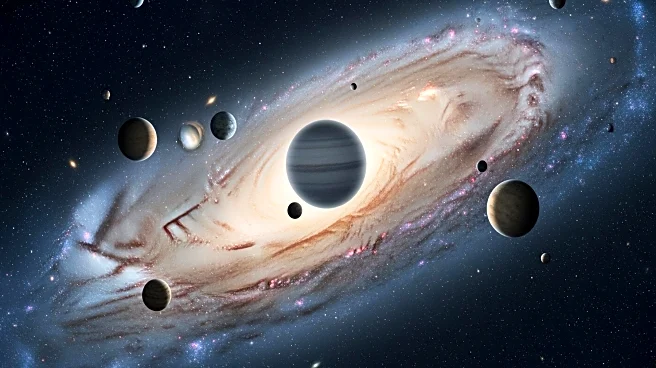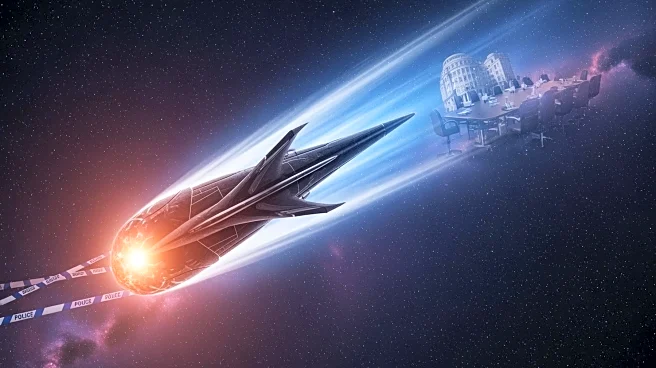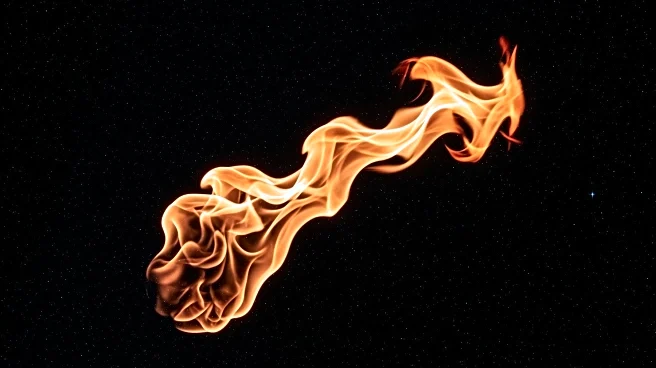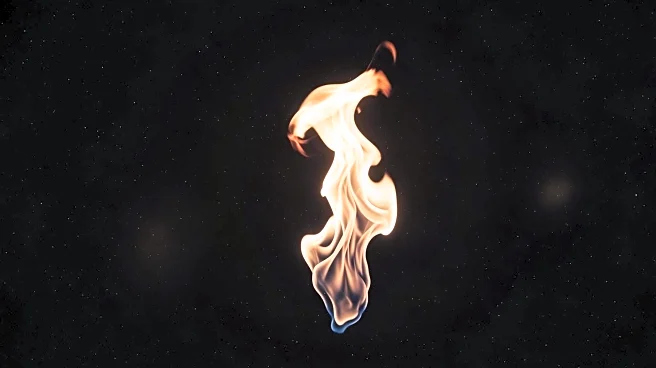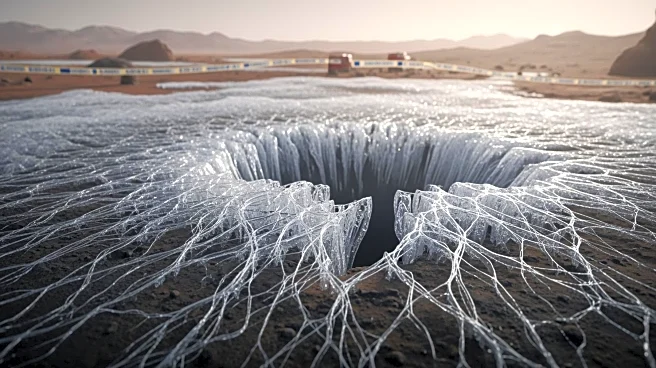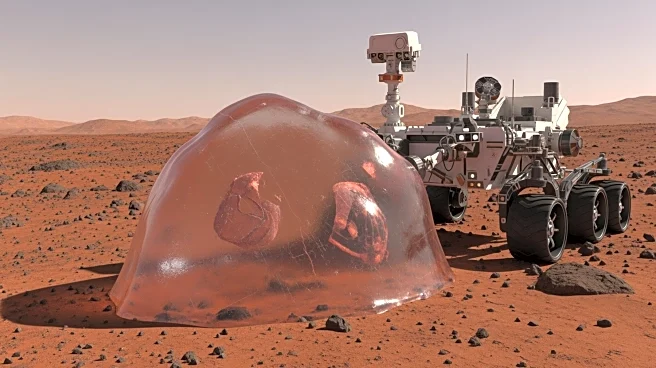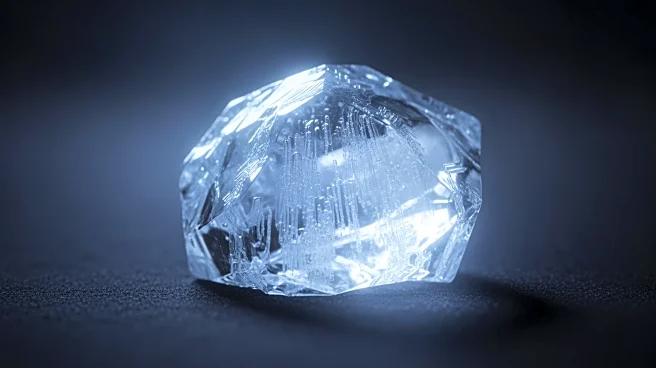What's Happening?
Recent experiments have revealed that the strange, sinuous gullies on Mars are formed by the sublimation of dry ice. These gullies, first observed in 1999, were initially thought to be created by seasonal
water flows. However, new research led by Earth scientist Lonneke Roelofs from Utrecht University has demonstrated that carbon dioxide ice, or dry ice, sublimates as it slides down the dunes, carving out these features. The experiments were conducted in a Mars chamber simulating Martian conditions, where blocks of dry ice were dropped onto sand slopes. The results showed that on slopes gentler than 22.5 degrees, the ice partially burrowed into the sand, and the sublimation process ejected the sand, creating the observed gullies. This discovery accounts for the gullies' unique features, such as their sinuosity and distinct levees.
Why It's Important?
This finding is significant as it provides a clearer understanding of Martian geology and the processes shaping its landscape. The research challenges previous assumptions about the presence of liquid water on Mars, which has implications for the search for life on the planet. Understanding these geological processes can also offer insights into similar phenomena on Earth and other celestial bodies. The study highlights the importance of dry ice in Martian atmospheric and surface dynamics, which could influence future exploration and colonization efforts. By understanding these processes, scientists can better prepare for potential human missions to Mars and the challenges they may face.
What's Next?
The researchers plan to conduct further experiments with larger blocks of ice and different sand types to refine their understanding of the sublimation process. These studies could help determine the full range of conditions under which these gullies form. Additionally, the findings may prompt further exploration of Martian landscapes to identify other areas where similar processes might occur. As Mars is a key target for future exploration, understanding its surface dynamics is crucial for planning missions and assessing the planet's habitability.
Beyond the Headlines
The study of Mars's gullies not only advances planetary science but also encourages a broader perspective on geological processes. By examining extraterrestrial landscapes, scientists can develop new frameworks for understanding Earth's own geological history. This research underscores the interconnectedness of planetary science and the potential for discoveries on other planets to inform our knowledge of Earth.
